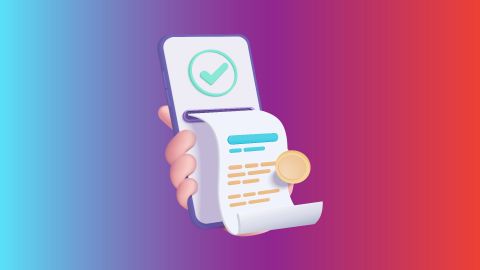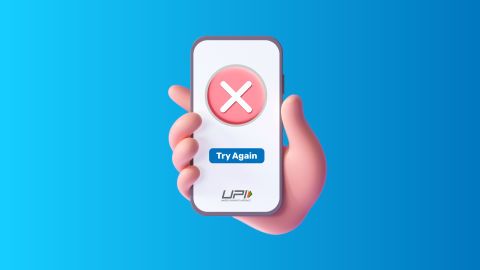Know about unit computation, slab-wise prices for domestic and residential consumption, higher tariffs for commercial customers, and possible subsidies to understand Ponanni power charges.
What are the electricity charges in Ponanni
-
Ponnani is a coastal town in the Malappuram district of Kerala, India. It falls under the jurisdiction of the Kerala State Electricity Board (KSEB), which is responsible for managing and distributing electricity throughout the state. KSEB plays a crucial role in providing reliable power to both urban and rural regions, ensuring that homes and businesses in Ponnani have access to electricity.
Additionally, customers can conveniently pay their electricity bills using theBajaj Pay – the BBPS platform on Bajaj Finserv. Bajaj Pay is a secure andaccessible avenue for users to handle their Ponanni electricity bill effortlessly.Overview of electricity charges in Ponanni
Here is a table summarising the electricity unit rates:Slab (units/month) Fixed charges (Rs/consumer/month) Energy charges (Rs/kWh) (revised) 0-50 40 3.25 51-100 65 4.05 101-150 85 5.10 151-200 120 6.95 201-250 120 8.20 251-300 150 6.40 301-350 175 7.25 351-400 200 7.50 401-500 230 7.90 Above 500 260 8.80 How to calculate domestic charges in Ponanni
Calculating domestic electricity charges in Ponanni involves several key components:
Determine consumption slab: Identify the total number of units consumed in the billing period.
Apply tariff rates: Check which tariff slab your consumption falls into (e.g., LT-I A, LT-I B, LT-I C). Apply the respective per-unit charges for each slab.
Calculate energy charges: Multiply the number of units in each slab by the corresponding per-unit rate. Sum up the charges for all slabs.
Add fixed charges: Include the fixed charges based on the kW demand, if applicable.
Calculate electricity duty: Multiply the total units consumed by the electricity duty rate (0.06 paise per unit).
Add customer charges: Include customer charges based on the consumption slab.
Sum up all charges: Add energy charges, fixed charges, electricity duty, and customer charges to get the total bill amount.
Check minimum charges: Ensure the total bill is not less than the minimum charges specified by the electricity board.
Adjustments and final bill: Apply any adjustments for previous payments or credits. The final amount is your total electricity bill for the period.How to check a Ponanni electricity bill
To check your Ponanni electricity bill, follow these steps:
Visit Ponnani website: Go to the official website of Kerala State Electricity Board (KSEB) depending on your region.
Consumer services: Click on the ‘CONSUMER SERVICES’ tab and select ‘ONLINE SERVICES’ from the drop-down menu.
Bill details: Choose the ‘PAY YOUR BILL’ option and enter your Unique Service Number to view your bill details.
Alternatively, visit the nearest KSEB office or collection centre with your account number and identification to check your bill.
By following these steps, you can easily check your Ponanni electricity bill. In addition, Bajaj Finserv also provides electricity bill payment services.Steps to make Ponanni electricity bill payment online on Bajaj Finserv
Here are the steps to make Ponanni electricity bill payment online on Bajaj Finserv:- 1. Visit the Bajaj Finserv website or click on https://www.bajajfinserv.in/
- 2. Go to the ‘ELECTRICITY BILL PAYMENT’ under the ‘PAYMENTS’ section
- 3. Click on ‘PAY NOW’
- 4. Select ‘KSEB’ as your electricity board from the drop-down menu
- 5. Enter your ‘CONSUMER NUMBER’ and click on ‘FETCH BILL’
- 6. Select a payment method from the list of available payment options such as credit card, debit card, e-wallet, UPI, and net banking
- 7. After choosing your preferred payment mode, enter the requested payment details.
Fees and charges
- A convenience fee of up to 2% will be charged depending on the transaction amount and payment mode (inclusive of applicable taxes). For more information on fees and charges, click here.Note: For failed transactions, the total amount including charges except taxes are reversed.
-
-
Recharge and Pay Bills
Mobile Prepaid
Mobile Postpaid
Broadband Bill Payment
Electricity Bill Payment
Bajaj Finserv App for All Your Financial Needs and Goals
Trusted by 50 million+ customers in India, Bajaj Finserv App is a one-stop solution for all your financial needs and goals.
You can use the Bajaj Finserv App to:
You can use the Bajaj Finserv App to:
- Apply for loans online, such as Instant Personal Loan, Home Loan, Business Loan, Gold Loan, and more.
- Explore and apply for co-branded credit cards online.
- Invest in fixed deposits and mutual funds on the app.
- Choose from multiple insurance for your health, motor and even pocket insurance, from various insurance providers.
- Pay and manage your bills and recharges using the BBPS platform. Use Bajaj Pay and Bajaj Wallet for quick and simple money transfers and transactions.
- Apply for Insta EMI Card and get a pre-approved limit on the app. Explore over 1 million products on the app that can be purchased from a partner store on Easy EMIs.
- Shop from over 100+ brand partners that offer a diverse range of products and services.
- Use specialised tools like EMI calculators, SIP Calculators
- Check your credit score, download loan statements and even get quick customer support—all on the app.
Frequently asked questions
What is the domestic electricity rate in Ponnani?
The domestic electricity rate in Ponnani ranges from Rs. 3.25 to Rs. 8.80 per unit, depending on consumption.
How can I calculate my electricity bill in Ponnani?
You can calculate your bill by breaking down your consumption into slabs and applying the respective rates.
Are commercial rates higher than domestic rates in Ponnani?
Yes, commercial electricity rates are higher, ranging from Rs. 6.50 to Rs. 8.40 per unit.
Can I pay my Ponnani electricity bill online?
Yes, you can conveniently pay your Ponnani electricity bill using online platforms like Bajaj Finserv.
What if I fail to pay my Ponnani electricity bill on time?
Failure to pay your electricity bill on time may result in late fees, and continuous non-payment could lead to disconnection.
Show More
Show Less




